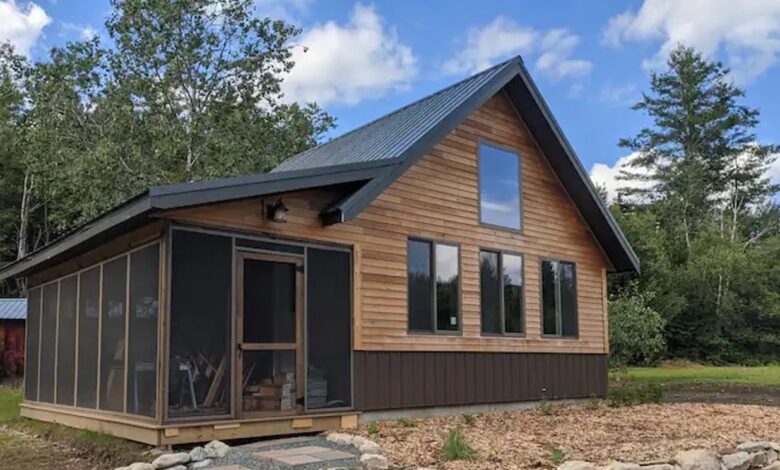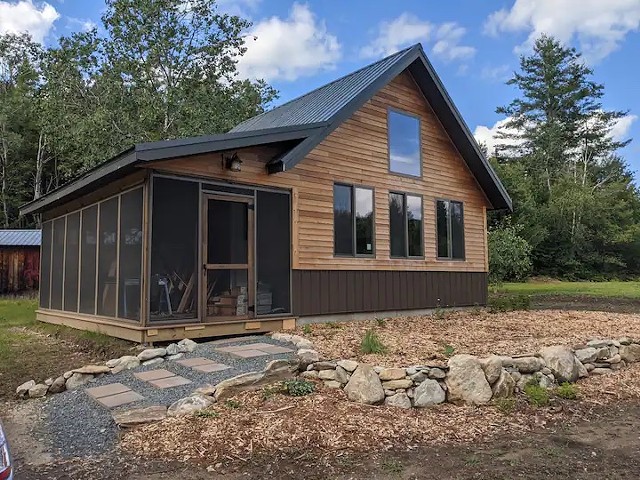Vermont’s Short-Term Rental Stock Continues to Grow | Business | Seven Days

The number of homes being used as short-term rentals in Vermont has risen 13 percent in the last year — a steep increase, but one that’s in line with the growth in neighboring states.
The number of entire homes — including about 100 tiny houses — that were listed on sites such as Airbnb and Vrbo hit 10,982 in June 2023 in Vermont, according to AirDNA, a Denver-based company that collects data on the online short-term rental industry. The number dropped slightly to 10,764 in July, a month in which several Vermont communities were devastated by flooding.
That 13 percent increase from June 2022 to June 2023 matches the growth in listings seen in Maine, New Hampshire and Rhode Island, AirDNA said. The number of homes listed on short-term rental sites rose 16 percent in New York and 10 percent in Massachusetts during that time. Listings jumped 21 percent in Connecticut.
Affordable housing advocates point to the growth in the short-term rental industry as one of the reasons for the housing crisis: Homes once rented long-term are now let to vacationers. For this reason, many Vermont cities and towns are looking at ways of regulating the industry.
Some Short-Term Rental Hosts Are Flouting Burlington’s New Regulations

Some Short-Term Rental Hosts Are Flouting Burlington’s New Regulations
By Courtney Lamdin
Housing Crisis
Burlington passed limits last summer on the type of units that can be used as short-term rentals. The city has about 240 active short-term rentals, which are defined as units rented for fewer than 30 consecutive days and for more than 14 days in a 12-month period. Hosts can rent their primary home, an apartment in the building they live in or an outbuilding on their lot.
Under Burlington’s rules, short-term rental hosts must live on-site unless the rental is a seasonal home, such as a camp, or it’s an apartment in a building that has other long-term units that meet certain specifications, including affordability. Hosts can also rent up to three bedrooms in the home where they live.
On Tuesday, Winooski started discussing proposed regulations. Jazmine Hurley, the city’s housing initiative director, said examining the impact of short-term rentals was identified as a priority by the city council this year. Winooski, with a population of around 8,000 people, has about 85 short-term rentals.
“It doesn’t sound like a ton,” Hurley said. “But we do have a very high renter population.”
Towns Across Vermont Are Beginning to Regulate Short-Term Rentals

Towns Across Vermont Are Beginning to Regulate Short-Term Rentals
By Rachel Hellman
Economy
Nearly 9 percent of Vermont’s short-term rental listings this summer are in Stowe, which had 935 homes registered in June, a marked increase from June 2022. The average daily rental rate in Stowe was $483, about $100 higher than the statewide average for an entire home.
Statewide, the short-term rental occupancy rate is low, hovering around 50 percent most of the year, the AirDNA data show. That figure typically rises in February and the summer, according to data from the past few years.
The impact of short-term rentals on the housing market is not clear. The Vermont Housing Finance Association, which works to create more affordable housing, provides AirDNA data on its website to help towns assess what’s happening in their areas.
“It can be very different depending on what community you’re in,” said Leslie Black-Plumeau, VHFA’s research and community relations manager.
She said some of the houses that are being rented online are second homes that would not have been available for year-round renters anyway. About 17 percent of Vermont homes are second homes, one of the highest proportions in the country.
Julie Marks, founder and director of the Vermont Short Term Rental Alliance, said many of the accommodations available online aren’t suitable for year-round renters because they’re yurts or treehouses.
“They could be tents in glampgrounds,” Marks said, referring to luxury campsites.
Regulations could soon start cropping up as quickly as the rentals. In the past year, at least 20 Vermont towns have talked about new rules for short-term units, Marks estimated.
“There are too many to keep track of,” she said.
























































